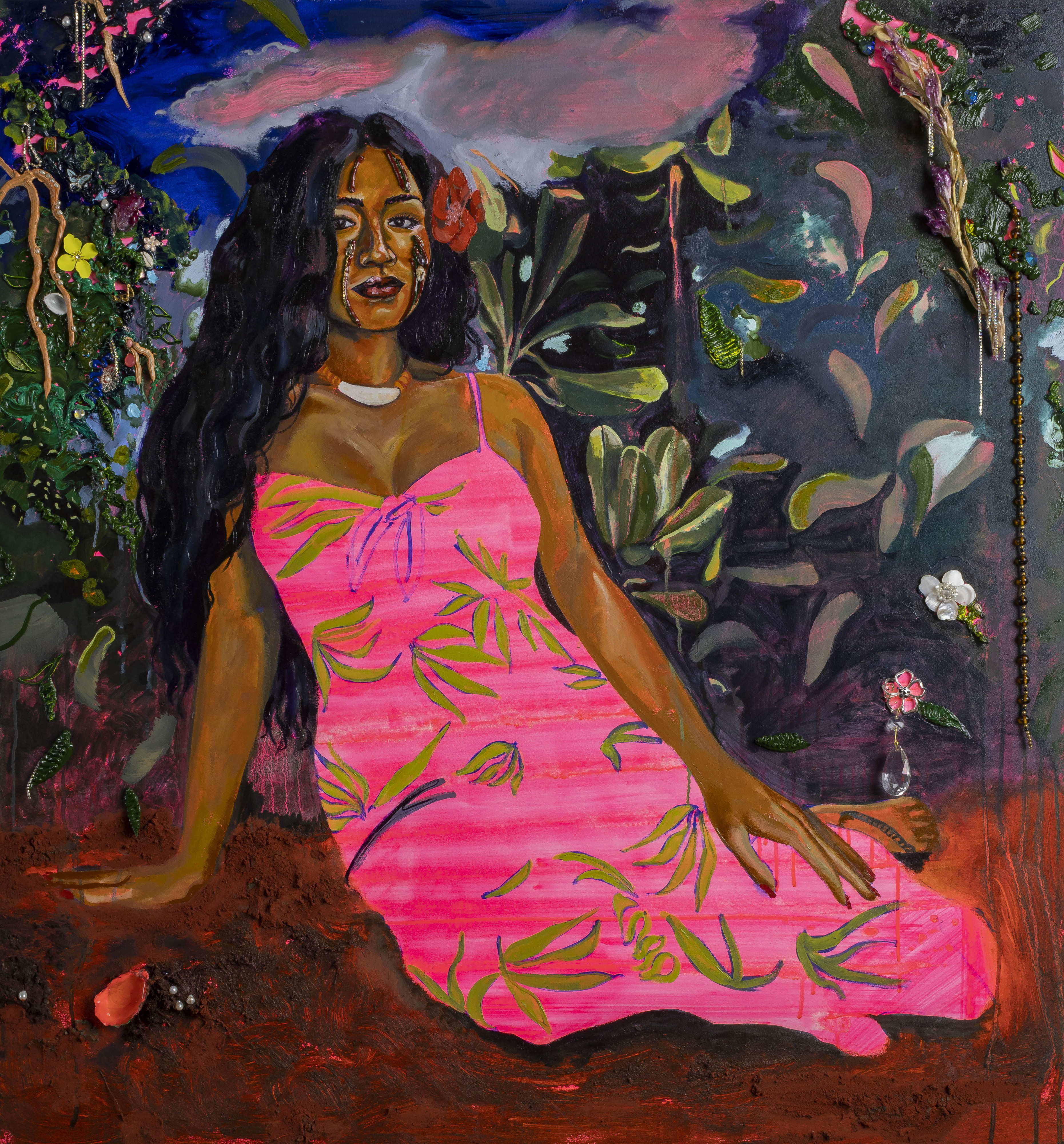Overview
The Ogunquit Museum of American Art presents the first solo museum exhibition of work by Gisela McDaniel, which explores the artist’s affirmational approach to portraiture.
Gisela McDaniel is a diasporic, Indigenous CHamoru artist who takes an affirmational approach to portraiture. Focusing on the individuality of her ‘subject-collaborators’ (a term she uses for the individuals in her paintings, often women and non-binary people of colour), McDaniel works to transform experiences and histories of trauma by creating space for healing and self-care through conversation and relationship building. McDaniel’s sitters range from friends and family to people and activists she meets through community, social media, and word-of-mouth. Her subject-collaborators are empowered to choose how they are depicted and invited to share personal belongings that are incorporated into their vibrant, three-dimensional portraits. The artist also gives agency to each sitter’s voice, incorporating into the portraits recordings of conversations had during the painting process. A CHamoru word, Inina translates to ‘glimmer of light.’ McDaniel’s canvases glow with her collaborators’ dreams, traumas, healing, and joy.
‘McDaniel’s work reimagines what portraiture can be, who it represents, and what values it conveys,’ said Devon Zimmerman, Curator of Modern and Contemporary Art, Ogunquit Museum of American Art. ‘This exhibition not only marks her first solo museum show in the U.S., but also honors her deep commitment to community, collaboration, and the centering of Indigenous narratives that have too often been excluded from the canon of art history.’
At the heart of the exhibition is McDaniel’s work with the CHamoru community and diaspora of Guåhan (Guam), her maternal homeland. Through portraits of relatives, activists, healers, and friends, she foregrounds Indigenous stories, identities, and values that have long been silenced in Western representations of Pasifika peoples. Her work directly confronts the legacy of that erasure, making visible and audible their full being.
McDaniel, with her collaborators, also explores the complicated relationship between Guam and the United States. The island became a U.S. territory following the invasion in 1898 (just weeks before the first art school opened in Ogunquit). Guam has since been made a space of intense militarization because of its location in the North Pacific.
Framing this body of work, is a survey of McDaniel’s portraits of subject-collaborators from Detroit, Los Angeles, and New York––all spaces that she has lived and worked. From early projects giving voice to survivors in the Detroit area to more recent exploration of people’s histories of migration in New York, these paintings spanning roughly the last half-decade, reflect the self-made community McDaniel has built through her practice.



